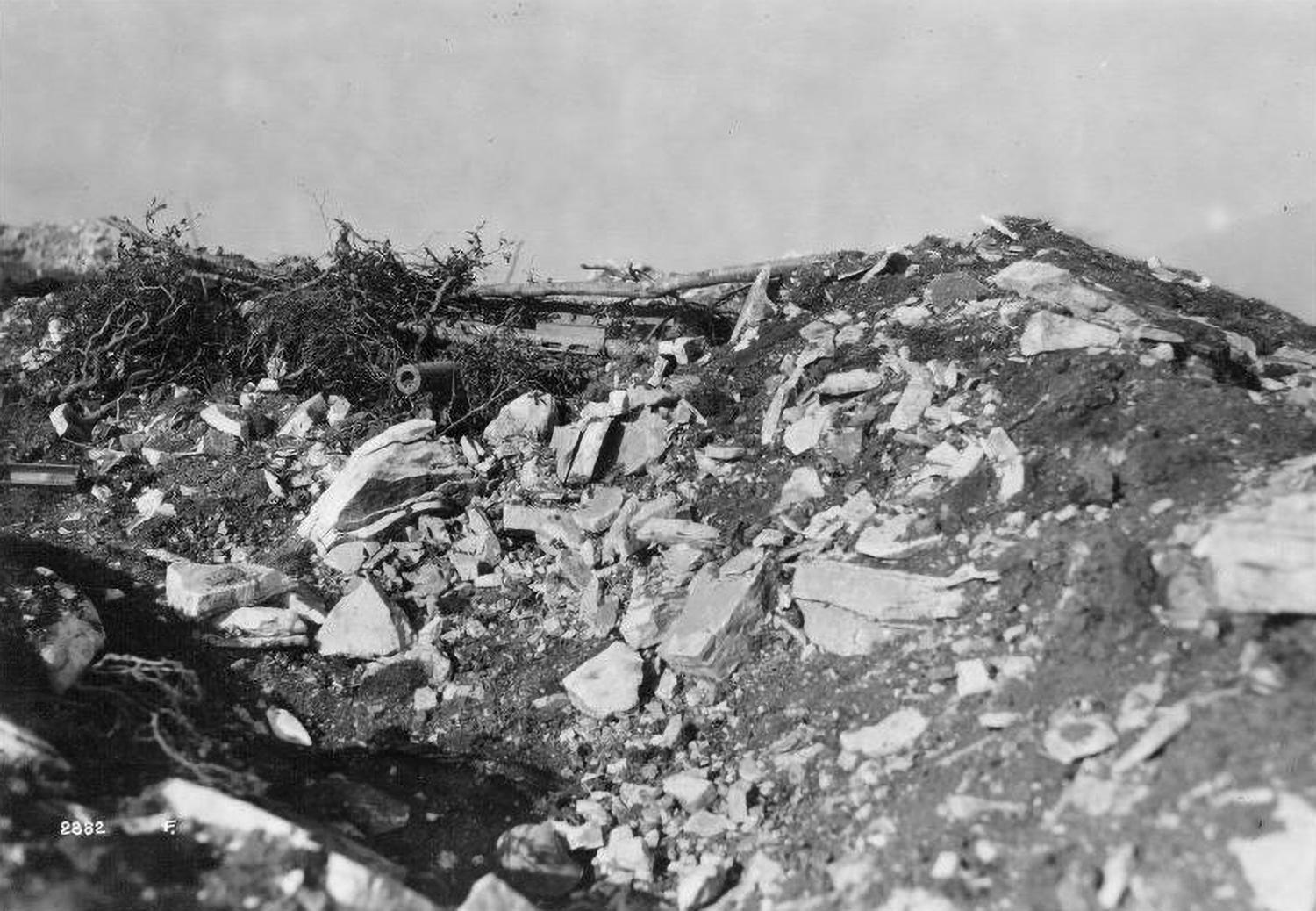After the First World War, the Vittoriano also acquired the function of a shrine
Between 1917 and 1920, Giulio Bargellini (1875-1936) and Antonio Rizzi (1869-1940) had had their cartoons of the mosaics for the lunettes of the eastern and of the western propylaeum approved. The artists made the mosaics, once again inspired by the concepts of Unity and Freedom, by 1921 .
Large territories such as Venezia Giulia, Venezia Tridentina and Dalmatia, although Italian by language and culture, had remained outside the unitary process. For this reason, during the Risorgimento they were usually called “unredeemed”. The question was resolved to some extent with the First World War, which a large number of historians considered the fourth and last Italian War of Independence. The change was immediately reflected in the Vittoriano.

The battlefield of Monte Grappa, Museum of the Battle of Vittorio Veneto, Photo by Luigi Marzocchi
In the years following 1918, the Vittoriano underwent a change of course, aimed at adapting it to viewing the First World War as the point of arrival of the Risorgimento process . In 1920 it was decided to wall up a plaque with the text of General Armando Diaz's Bulletin of Victory in the upper square, which from then on took the name of Piazzale del Bollettino. A few months later, in 1921, a block of stone excavated from the Monte Grappa was placed in the same place, in memory of the First Battle of the Piave.
The decision to place the body of an unidentified Italian soldier, the Unknown Soldier, in the centre of the Altar of the Fatherland must be ascribed to the same phase. The burial ceremony, which took place on 4th November 1921, on the occasion of the third anniversary of the announcement of the Italian victory in the First World War, gave the Vittoriano an unprecedented dimension of shrine.